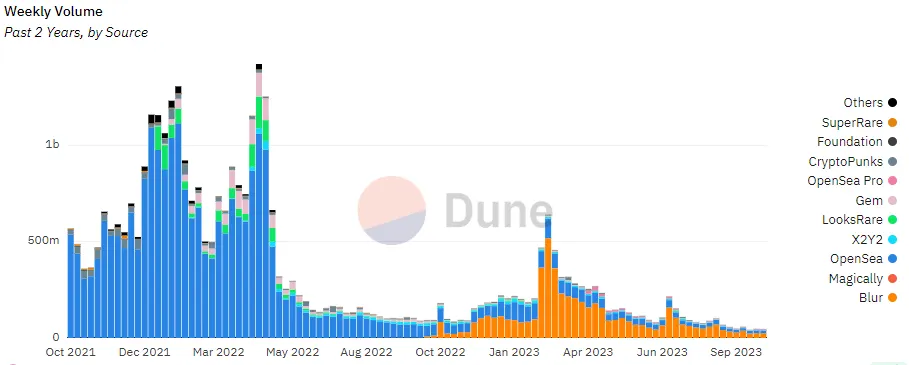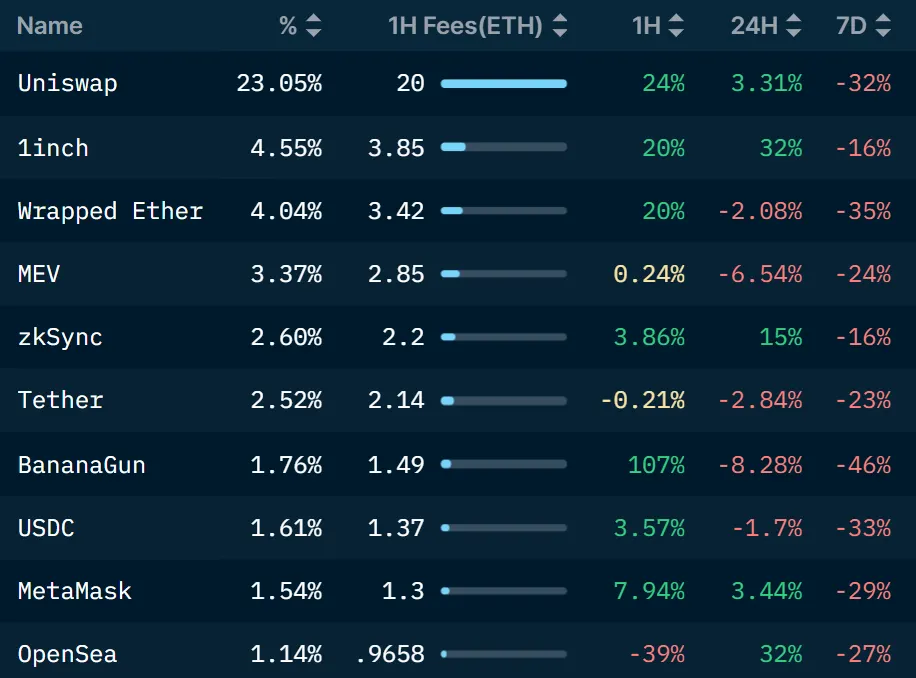


$88,323.00
1.12%$2,967.93
0.49%$858.78
0.87%$1.87
0.31%$0.999758
0.00%$125.42
1.27%$0.285349
0.20%$2,967.79
0.54%$0.12291
-0.39%$1.041
0.60%$0.351679
-0.24%$56.92
0.27%$596.76
-1.49%$3,629.65
0.48%$88,186.00
1.14%$3,225.81
0.50%$3,217.45
0.45%$0.999422
-0.01%$0.998691
-0.00%$12.36
-0.23%$526.47
-2.80%$9.12
5.14%$441.75
2.68%$2,967.33
0.45%$0.208574
-2.71%$88,378.00
1.22%$0.99831
-0.01%$25.94
0.34%$77.95
-0.45%$0.148247
18.12%$12.58
1.40%$1.44
0.56%$0.111192
-1.09%$0.998669
0.00%$0.00000708
-1.31%$1.61
2.70%$0.145316
2.21%$1.082
0.18%$5.92
-1.36%$0.091946
-2.70%$0.999689
-0.00%$1.21
0.01%$0.999559
-0.05%$0.958321
-3.51%$1.81
-0.05%$0.00801458
0.72%$1.51
5.61%$3.49
0.05%$149.34
-1.56%$4,357.92
-0.08%$106.70
-0.11%$0.996432
-0.13%$222.14
0.84%$1.52
-0.62%$11.82
-1.37%$2,967.85
0.50%$156.93
1.24%$1.00
0.00%$0.00000412
1.33%$0.203659
0.70%$0.693911
0.22%$0.03046632
-2.91%$4,357.30
-0.40%$0.09537
-2.57%$125.31
1.22%$0.204172
-1.28%$2.83
-1.92%$1.11
0.01%$0.00000165
-0.18%$0.999633
0.00%$4.53
0.83%$10.79
0.40%$0.058583
-5.28%$0.999599
-0.00%$0.998695
0.01%$0.490938
-0.76%$136.78
1.16%$1.72
2.64%$1.14
0.02%$0.999606
-0.00%$3,422.35
0.48%$858.40
0.84%$10.33
0.28%$0.374684
-0.64%$0.04388177
1.47%$0.00189467
5.54%$3,147.16
0.65%$0.190843
0.08%$0.102493
-0.80%$1.02
0.02%$3,625.35
0.66%$69.91
-0.60%$0.114239
-3.11%$4.95
0.79%$88,327.00
1.45%$88,555.00
1.26%$1.32
0.76%$88,355.00
1.26%$1.97
-0.47%$0.050202
-0.72%$0.01080135
-0.30%$0.889266
-1.00%$0.01071366
-3.56%$0.999278
0.04%$0.998219
-0.04%$3,179.19
0.64%$113.80
0.01%$10.94
0.03%$0.999024
-0.08%$0.999606
0.00%$0.113382
-0.69%$0.096557
-0.35%$88,129.00
0.97%$2.78
1.82%$3,215.17
1.10%$1.11
0.02%$88,809.00
0.00%$3.59
-0.04%$0.00000771
-0.51%$1.11
0.01%$1.29
-0.37%$3,167.86
0.43%$0.99976
0.01%$1.89
2.94%$0.999475
-0.03%$0.190529
2.11%$26.19
0.42%$0.01071613
-3.42%$1.11
-5.06%$3,125.45
-0.01%$145.55
1.39%$2,967.40
0.62%$0.00904125
1.60%$1.61
7.41%$1.23
-0.28%$0.373748
-3.34%$0.990418
-0.45%$43.10
-0.13%$0.502292
2.87%$0.12178
0.54%$88,245.00
1.04%$0.268984
-0.05%$2,967.38
0.49%$0.997694
-0.06%$0.584263
-0.82%$0.999348
-0.02%$0.997013
-0.06%$0.208693
-0.05%$2,966.45
0.66%$0.253412
-0.52%$0.697486
0.49%$0.486308
1.83%$4.46
-2.22%$1.028
0.31%$0.678263
-0.51%$3,196.29
0.38%$3,174.18
-0.37%$169.02
1.22%$0.12354
9.23%$0.00449533
-0.47%$0.414435
-3.18%$0.04057641
9.87%$0.04154474
4.66%$0.994235
-1.45%$89,379.00
2.36%$0.00419327
1.85%$0.462631
1.44%$0.438173
-3.55%$0.197798
-0.67%$3,273.36
0.40%$0.00000039
-0.14%$0.078206
-2.44%$0.00003993
1.50%$0.331926
6.58%$3,317.66
0.58%$1.11
0.01%$0.01936964
1.30%$0.03461098
-2.35%$9.57
-0.19%$0.875869
1.88%$0.070547
0.23%$1.17
-0.25%$148.85
-1.02%$0.17199
12.44%$21.66
-1.69%$0.083576
0.96%$17.53
-0.99%$0.316944
-1.58%$1.00
0.04%$0.00000035
-0.53%$88,245.00
1.15%$0.185688
8.23%$0.058653
0.08%$127.49
1.01%$140.85
0.72%$1.00
0.08%$0.055999
-0.22%$18.49
-2.09%$0.211038
0.27%$2,966.44
0.43%$0.123035
-0.33%$0.999583
0.07%$15.58
1.34%$0.998591
-0.03%$1.87
1.08%$0.999788
0.03%$3,215.14
0.42%$0.085029
3.75%$0.112201
-1.31%$1.13
-0.09%$0.076596
2.86%$88,366.00
1.21%$0.288359
1.32%$0.00582023
-1.00%$2.78
12.53%$2,957.08
0.44%$25.94
0.26%$0.00595604
-1.27%$3,215.05
0.74%$0.991635
-0.01%$0.275121
-5.16%$73.47
-2.89%$2,966.25
0.52%$1.45
-7.69%$0.268785
0.40%$1.92
3.26%$0.164891
6.34%$910.44
0.89%$88,493.00
1.12%$1.00
0.00%$1.09
0.01%$3.69
0.23%$0.257086
-1.27%$23.27
0.84%$0.01421186
9.86%$88,175.00
0.97%$0.02347939
9.55%$1.25
0.04%$0.02947355
0.63%$25.84
2.59%$2,969.31
1.02%$1.06
0.02%$0.907877
0.79%$88,304.00
1.08%$3,628.30
0.47%$0.123246
2.18%$1.45
-3.96%$0.0023846
1.69%
On October 8, the average Ethereum gas fee dropped to 8.8 Gwei, levels not seen since October 2, 2022, when the average gas on the network fee was 8.4 Gwei, per Etherscan data.
Ethereum's gas prices are typically measured in Gigawei (called Gwei), which is equivalent to 10^9 Wei.
Wei represents the smallest denomination of ETH, with 1 ETH equal to 10^18 wei.
The decline in gas fees can likely be attributed to a drop off in users on DeFi applications, NFTs, layer-2 networks, and various Telegram bots.
The weekly trading volume for NFTs plummeted to two-year lows, per a Dune dashboard by data analyst Hildobby.

The NFT trading volumes have plummeted since the start of the year.
Telegram trading bots which took off in the second quarter of this year also saw diminishing activity at the start of October, per a Dune dashboard by TK Research.
In fact, the gas consumed by heavyweight entities on Ethereum like Uniswap, 1inch, and MetaMask has dropped in double digits since last week, according to data from Nansen 2.0.

Nansen 2.0's data further indicates that the top gas spenders, including exchanges like Binance and Coinbase, as well as layer-2 networks such as Arbitrum, Optimism, and Base, spent 30% less compared to the previous week.
This is the first time the consumption on low-fee layer-2 networks has seen a downtick since last year, per data analyst Funnyking’s Dune dashboard.

Ethereum turned inflationary at the start of September 2023 as gas fees plummeted.
On Monday, the amount of Ethereum burned hit its lowest point for the year, with only 7,084 ETH being burnt.
The last time Ethereum experienced such minimal burn levels was on September 19, per a Dune dashboard, shortly after the Ethereum Merge update, which marked the introduction of the burning mechanism.
Currently, Ethereum’s supply is growing at a rate of around 1,450 ETH daily, or $2.2 million worth of Ethereum, per data aggregator Ultra Sound Money.
The annual inflation rate at this rate is 0.44%.
